Nvidia GTX 1080 Founder's Edition Review - A New King
A week and a half ago, NVIDIA announced their next flagship GPU, the GeForce GTX 1080. This is the first GPU to use the company's new Pascal architecture. According to NVIDIA, this powerhouse is set to deliver substantial increases over the previous generation. Even though we're still another week and a half away from launch, we've gotten our hands on one of the new cards, and we've been putting it to the test.
First look
Before we get into the benchmarks, we'll take a look at the card that we've been testing. We're using the Founder's Edition card released by NVIDIA. If you're not familiar with the Founder's Edition, you can see our in-depth piece on just what that means, here. In short, it's essentially the new "reference card" with NVIDIA's own custom air cooling solution. The premium parts fetch a premium price. The Founder's Edition card that we're testing today will retail for $699, as opposed to the $599 entry level price for the card.
The GTX 1080 is the first card to switch from the 28nm process down to 16nm. It's also the first card to use GDDR5X memory, which is supplied by Micron.
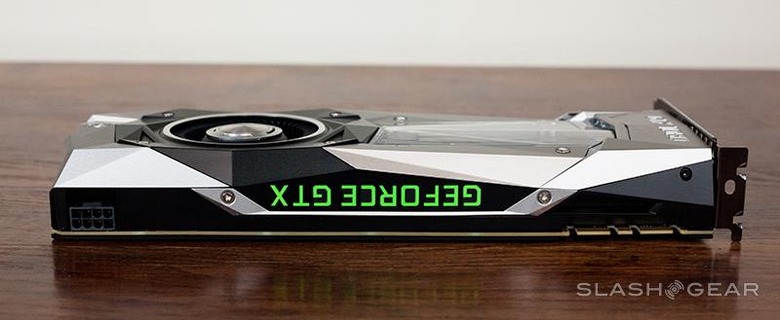
Despite the beefy specs, it doesn't need nearly as much power as you'd imagine. The card only draws 180 watts. That's 15 watts more than the GTX 980, and a full 70 watts less than the 980 Ti. With that low of a power requirement, it only needs a single 8-pin connector.
Here are the official specs for the card, as released by NVIDIA:
- 16nm FinFET GPU
- 7.2B transistors
- 2560 cores
- 8GB G5X memory
- 10GBPS Quad Data Rate
- 9TFLOPS
- DP1.4 HDR 4K@120Hz
- HDMI 2.0B 4K@60Hz
- Vapor Chamber Cooling
- 2GHz+ OC capability with air cooling
Test system
A benchmark is only as good as the test system it's ran on. Thanks to Intel and Kingston, we've got a great test machine that ensures that we won't hit any bottlenecks when testing the GTX 1080. Take a look at our system specs below:

Benchmarks
For our benchmarks, we've chosen a few different games for real-world testing. Synthetic numbers might be nice, but real-world numbers don't lie. For our first round of benchmarks, we're running all of our tests at stock speeds. We'll have a piece in the future about overclocking the GTX 1080.
Ashes of the Singularity
Ashes of the Singularity is one of the few DirectX 12 titles currently available, with a built-in benchmarking tool. This RTS often features many units on the screen at once, all engaged in combat. It can be very demanding on the GPU, which makes it perfect for benchmarking. For our tests, we cranked up the settings to "Crazy" which is the highest that they'll go. We tested each card in both 1080p and 1440p.
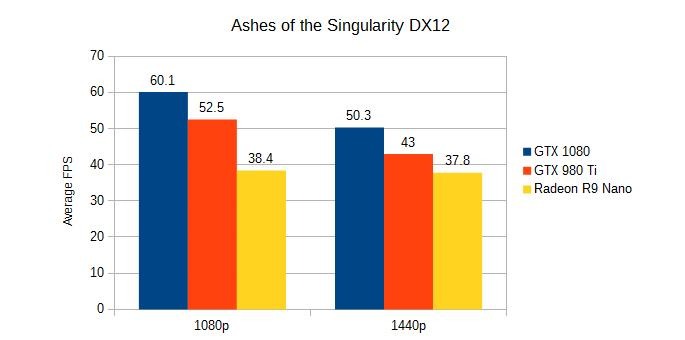
Hitman
Hitman is our other DirectX 12 benchmark. The game is particularly nice for benchmarking, as it has a dedicated tool that allows you to adjust the settings and run benchmarks without having to load up the game first. For both our benchmarks we're running the game on Ultra, at both 1080p and 1440p.
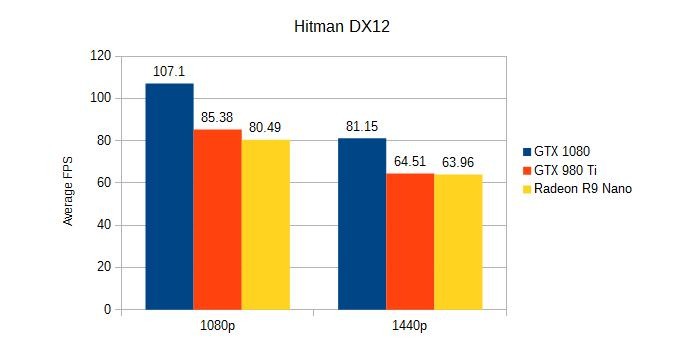
Middle Earth: Shadow of Mordor
While this game has been out since 2014, it still makes for a great benchmarking. As with our other tests, we've cranked up the settings as high as they would go, on Ultra. Since the game can run higher than our test screen's native resolution, we're testing the game at both 1440p and 4K.
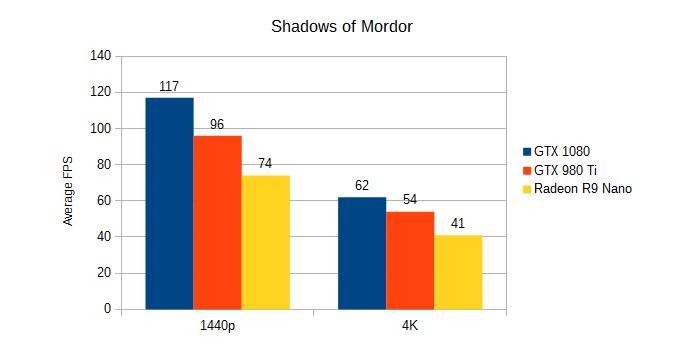
The Division
The game may be a mess in terms of cheating and end-game content, but it's hard to deny that the game is beautiful. For our tests, we've set the graphics quality to Ultra. We've made one small change to the Ultra preset, which is to turn V-sync mode to "off" in order to record frame rates higher than 60. Our tests are conducted at 1080p and 1440p.
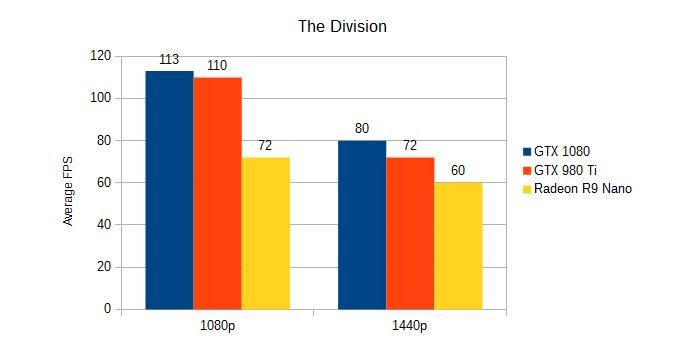
Conclusion
In virtually every test, the GTX 1080 easily outpaces the previous king of consumer cards, the 980 Ti. There's really nothing you can throw at this card that it can't handle, currently. And we're still only looking at stock speeds. NVIDIA has demonstrated that it can easily be overclocked well past the stock speeds. With a bit of tweaking, this card will only continue to shine.
At $699, the Founder's Edition is a great value. And since we're only looking at stock speeds, you should expect the same performance from any of the $599 flavors of the GTX 1080. The card will go on sale to the public starting May 27th. You should be able to find both the Founder's Edition, as well as a variety of offerings from 3rd party manufacturers with their own custom cooling solutions at that time.
